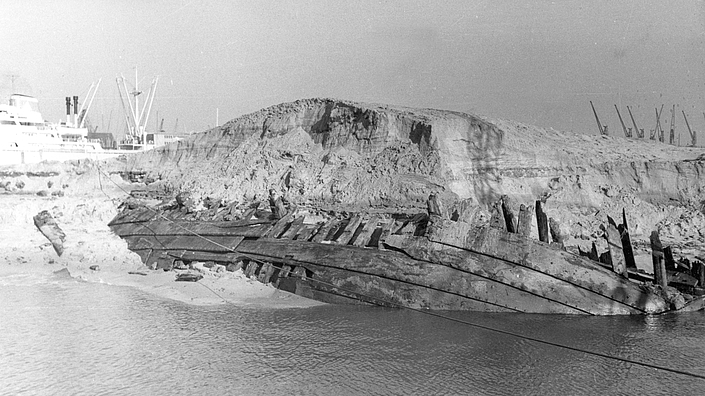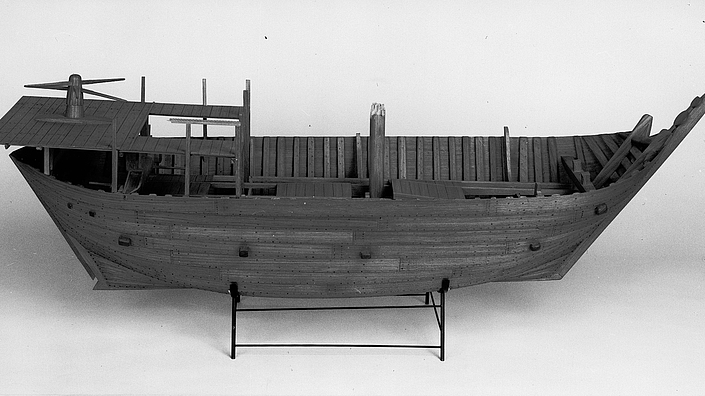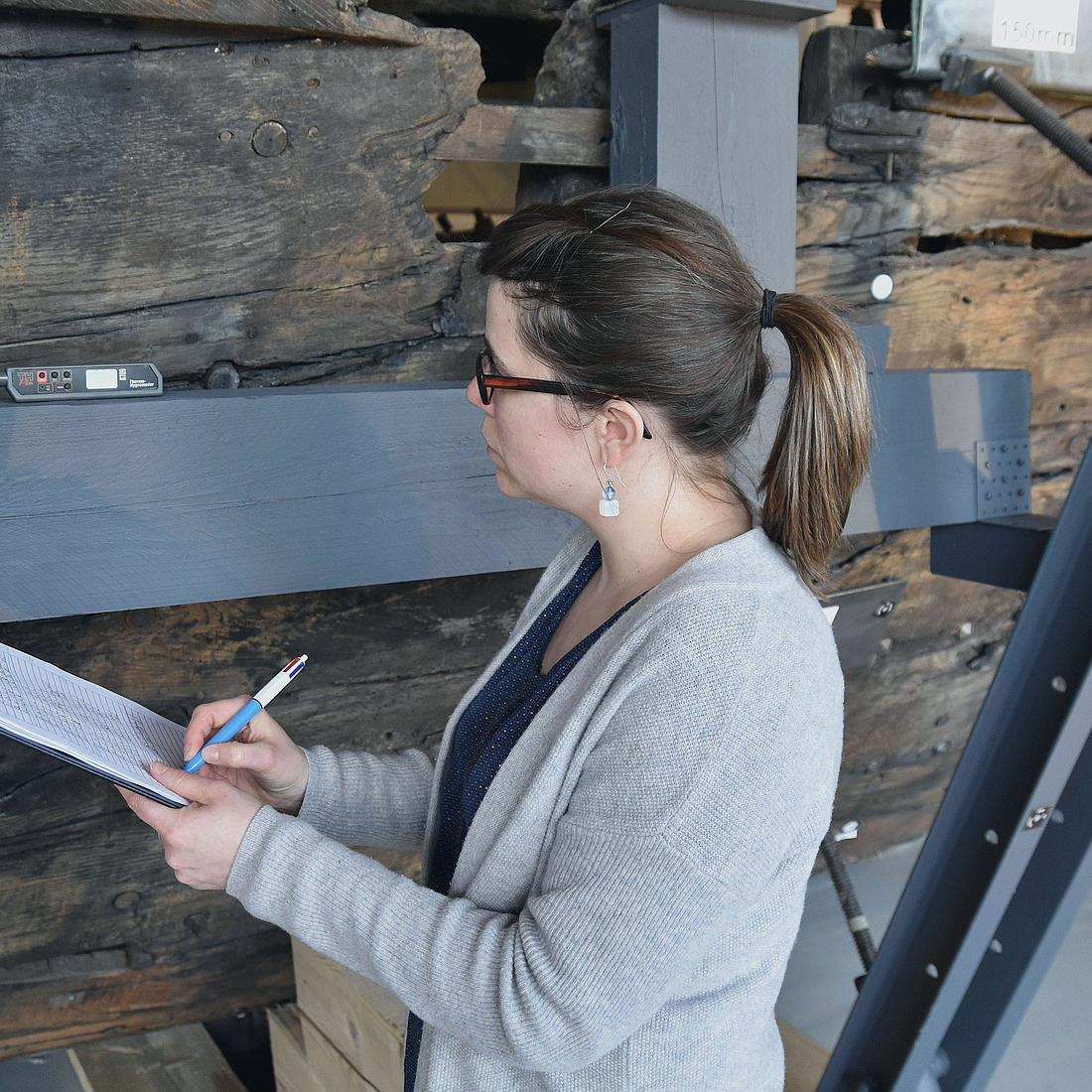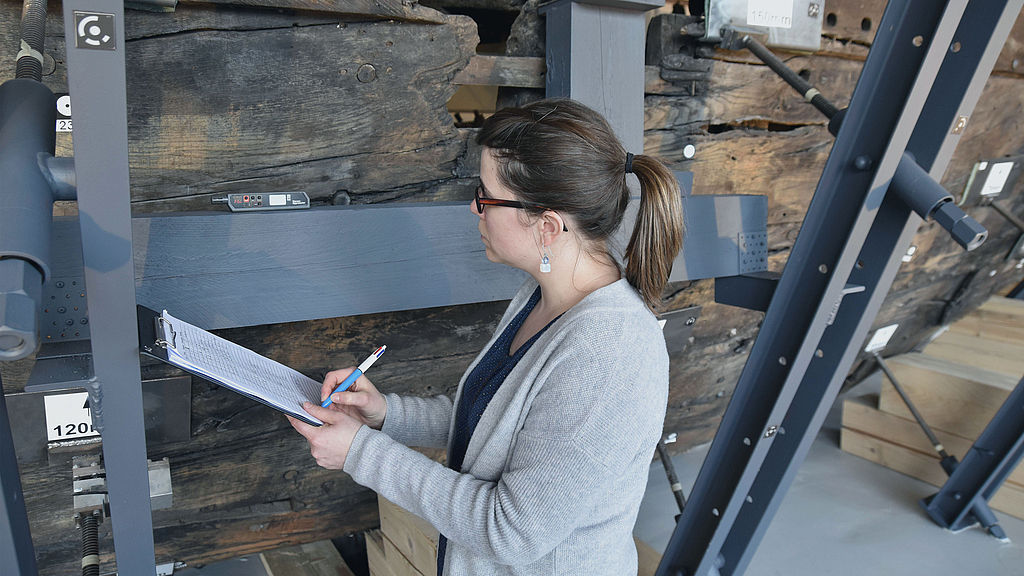Three-dimensional preventive conservation
Nowadays new technologies in the field of conservation are irreplaceable. In the context of a doctoral thesis a monitoring system with photogrammetry is developed for the Bremen cog.
The discovery of well preserved ships in an archaeological context is rare. Ships like the Vasa (Sweden), Viking ships in Roskilde (Denmark) and the "Bremen Cog" have clearly shown the complexity of the excavations in the 1960s. Archaeology has long recognized the challenges of fieldwork and the need for interdisciplinary experts. Over the past 60 years, the focus in the field of conservation has been on the treatment of wet wood and wet organic finds. The current consensus is the use of polyethylene glycol (PEG), under different procedures: with or without freeze-drying, or with different molecular weights. However, this raises questions: What happens after the treatment? What happens in the exhibition? Which additional supports are necessary for the presentation?
Wood lives
Wood is a living material and ships are not designed to be stored on land. Archaeological ships are a combination of wood and preservative, and therefore a unique material. In the end, material knowledge cannot be applied to every wood find, as each object must be considered individually with regard to its long-term behaviour.
Support system and deformation processes
Support systems have been designed on the basis of experience, but empirical information must be correlated with facts. Although the cog has been on display since May 2000, the presentation of the ship has not yet reached its final form. The original support concept has been shown to be unsuitable since 2001, when the first deformations were detected. During an international workshop in 2013, the lack of information about the deformations was identified and a permanent monitoring of the ship was declared necessary. Since 2014 the German Maritime Museum has been working on a digital three-dimensional recording protocol for monitoring the Bremen cog. The aim is to record displacements in the wood in order to better understand the deformation processes. A cooperation with the Jade University of Applied Sciences and the Institute for Applied Photogrammetry and Geoinformation (IAPG) in Oldenburg enables close collaboration with experts* in the field of surveying technology. Photogrammetry is already successfully used for monitoring the Bremen cog. Within the framework of the present research project, the use of this technique will be refined and optimised.
Team
Silke Wiedmann, M.A.
Prof. Dr. Sunhild Kleingärtner
in cooperation with
Prof. Dr.-Ing. Thomas Luhmann, Institute for Applied Photogrammetry and Geoinformatics (IAPG), Jade University of Applied Sciences Oldenburg (supervisor)
Heidi Hastedt, M.Eng., Scientist IAPG, Jade University of Applied Sciences Oldenburg
Contact
Silke Wiedmann, M. A.
wiedmann@dsm.museum
Colson A
Digital Documentation of Ships in Cultural Heritage : A European Review
Digital Workflows for Cultural Heritage, The International Archives of the Photogrammetry, Remote Sensing and Spatial Information Sciences 2017
Schmik J et al.
Photogrammetrisches Monitoring und Deformationsanalyse der Bremer Hanse-Kogge
Beiträge der Oldenburger 3D-Tage 2018 (Wichmann)
Stylianidis E und Remondino F (eds)
3D Recording, Documentation and Management of Cultural Heritage
Whittles Publishing 2016
Related contributions
-Research object "Bremen cog"
The salvage of the wreck from the harbour area in Bremen Rablinghausen was the beginning of a history of research that continues to this day. We cordially invite you to accompany us on this journey!

The "cog" in the picture
The pictorial representations of the "Kogge" since the 19th century are the subject of an art scientific doctoral thesis at the DSM.



